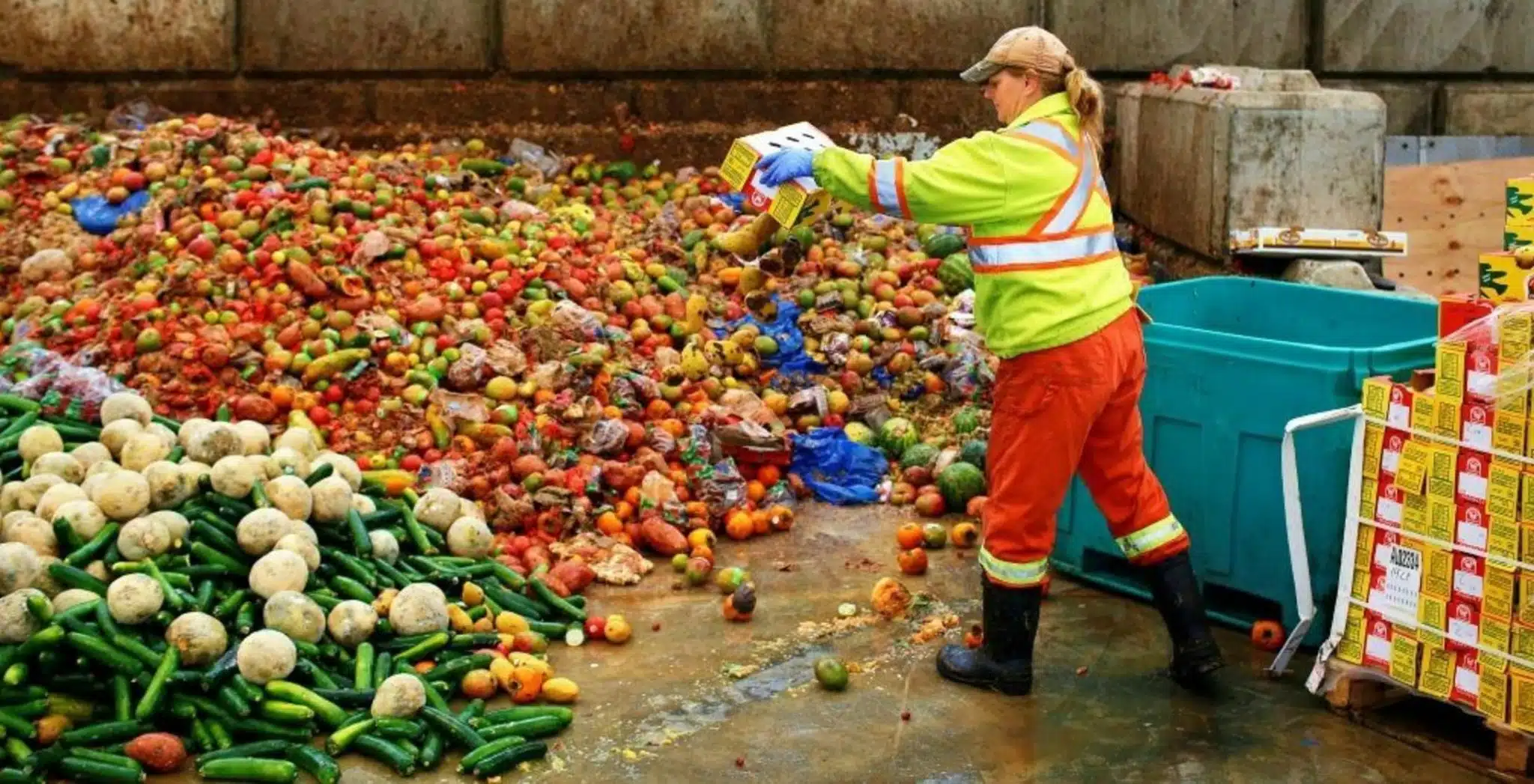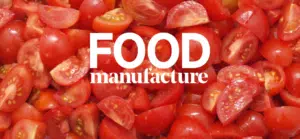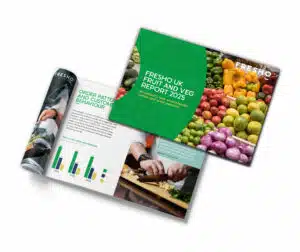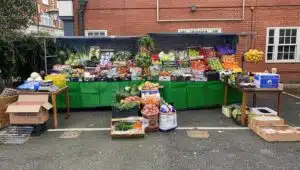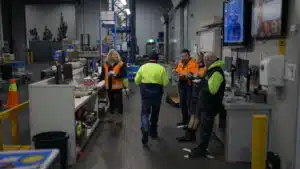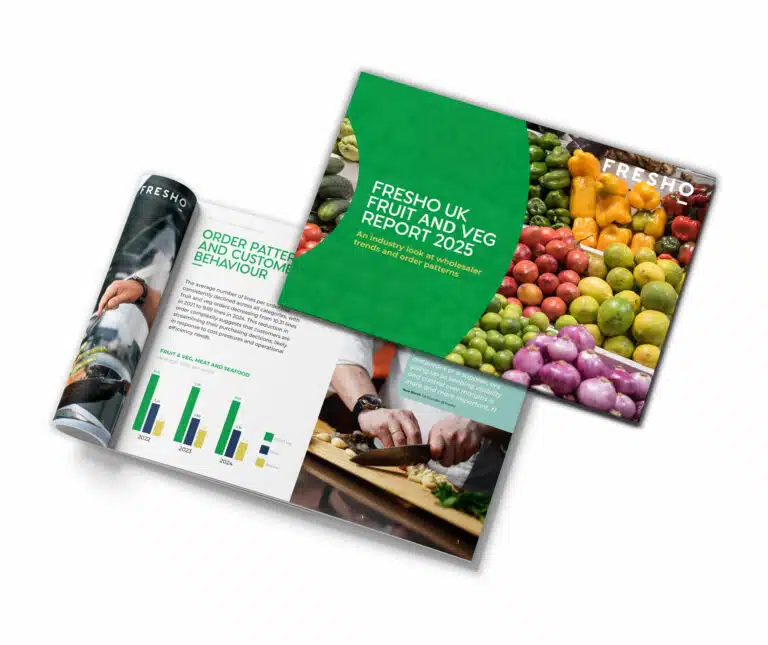One-third of all food produced for human consumption is lost or wasted, according to The Business Case for Reducing Food Loss and Waste, a report. This equates to an economic loss of US$940 billion globally. It means that more than a billion tons of food never gets consumed each year – and much of this is wholesale food waste.
The original driver for founders Huw and James to set up Fresho in 2015 was to tackle waste in the fresh food supply chain. They had seen it first hand in their previous careers and felt it was morally and financially irresponsible.
How to reduce food waste and why is it a problem?
Food waste comes with a double hit to the environment. It combines the land and water impacts of production with greenhouse gases generated by landfill. These gases are thought to account for 8% of all emissions globally.
Of course, there is also a significant financial cost, borne by farmers, distributors, retailers, foodservice and consumers.
Given the integrated nature of the food supply chain, the best approach to reducing waste has to be a holistic one. But there are steps that wholesalers themselves can take to limit their losses, whether measured in product or financial terms.
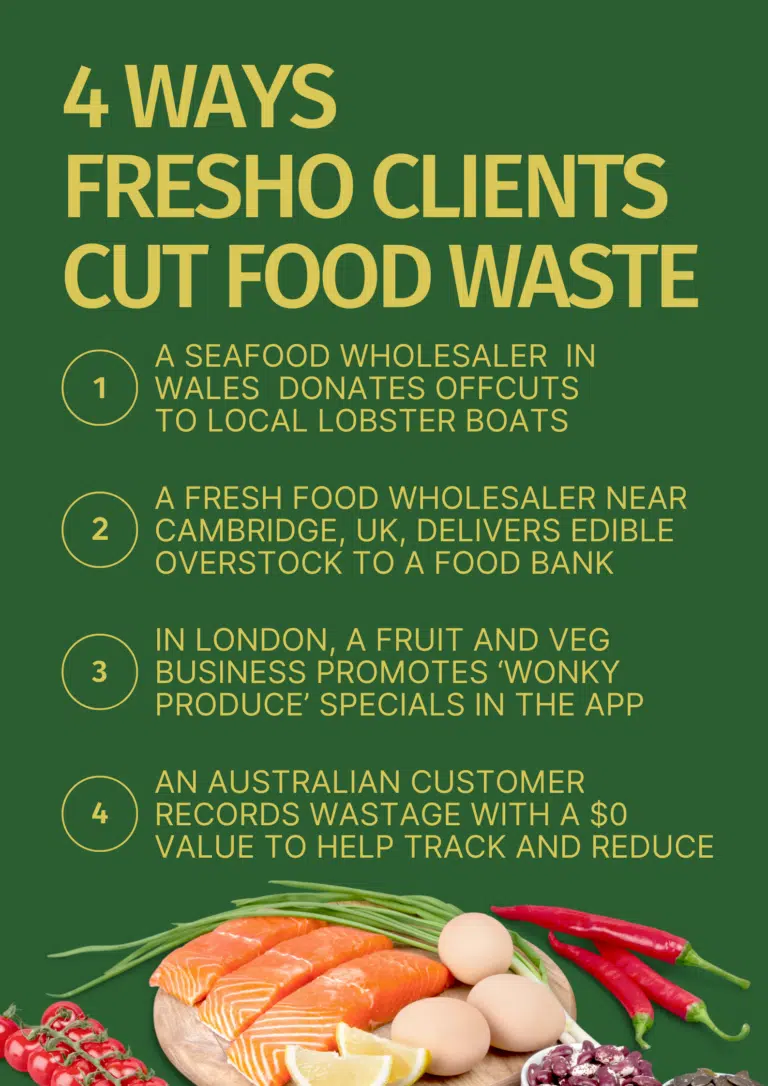
Here are four ways wholesalers can reduce fresh food waste.
1. Improving order visibility can mean less food waste
Many fresh food wholesalers pride themselves on knowing every customer, supplier and product line personally. Those relationships have real value. They are often what got a business from its humble origins to today’s success.
But as businesses grow, customer expectations rise and competitors circle. It’s important to put systems in place to support the human touch, increase efficiency and reduce waste.
For distributors, these might be tools to help with order management, picking, delivery or invoicing. Systems like these can reduce operating costs. They can also cut out the delays and errors that leave customers frustrated.
And the data they provide opens up a world of possibilities for improving how a business is run.
Real time information on what is moving and what’s not, on which customers have reduced their orders, or on what lines are giving low margins this week. This data can help wholesalers to better predict demand and shape supply. This is a lever to reduce wastage.
Meanwhile, visibility of stock on hand allows overstocked products or those with shorter shelf lives to be promoted as specials with a few clicks, helping to keep them moving and out of landfill.
2. Working more closely with customers
The fresh food business is fast-moving and interconnected. Wholesalers can’t address the problems of food waste on their own. Nor can chefs and venues.
But, working together, they can enhance sustainability, lower costs and contribute to a more efficient supply chain.
This depends on having strong relationships and communication channels between suppliers and their customers. In many cases the relationships are already in place: chefs and suppliers get to know and depend on each other and long-term loyalties form.
But day-to-day communication can vary despite this – and efficiency suffers.
A fresh food order management platform is one way of addressing this. It can help optimise inventory and reduce inefficiency and waste. It can allow chefs and venues to work together to minimise excess stock and to reduce the time products spend in storage.
Buyers can see stock availability for their suppliers, knowing that they will receive what they need, and avoiding over-ordering. Chefs and owners have access to an easy-to-use ordering tool that replaces random phone calls, texts and late-night voicemails, providing order visibility.
They can place and manage standing orders, so suppliers have advance visibility of what they need to have in stock.
In short, wholesalers and their customers communicate and collaborate almost daily, but often lack the tools to do it well. Online order management can help food suppliers and venues to move from ‘just-in-case’ to ‘just-in-time’ ordering, reducing food waste in the process.
3. Showcasing seasonal and local products
Whether Spring Lamb, Autumn pumpkins or wild-caught salmon, fresh food wholesale has been driven by the seasons since it first came into existence. And even though many of us can now access the foods we want at any time of year, there is renewed interest in produce that has been grown, raised or caught in-season and in-region.
Chefs, in particular, like to showcase what’s at its best, and what can be traced to truly local producers.
Whatever the motivation of the end consumer – freshness, supporting local growers, or reducing food miles – it’s clear that wholesalers want to prioritise readily-available seasonal and local products, while chefs strive to develop efficient, waste-reducing menus based on fresh ingredients. Anything that supports them in this must be a good thing.
Online order management systems have the ability to do so, by letting wholesalers highlight and promote products that are coming into season or in plentiful supply, and helping chefs identify special ingredients, for example those from a new local source.
4. Donating and diverting from food waste
Nowadays there are opportunities for wholesalers to sell imperfect or close-to-expiry products to buyers at a discounted rate. Outside of food service , wholesalers could even look direct to the public, who are used to seeing ‘wonky’ fruit and veg in the supermarket.
Food donation is another option, where wholesale distributors partner with charities to redirect surplus, edible food, effectively combating hunger and reducing waste. UKHarvest, OzHarvest and KiwiHarvest are among the organisations that redirect billions worth of excess food in their respective countries.
There is no single answer to how fresh food suppliers can reduce wholesale food waste. It takes a holistic approach to operational efficiency, across purchasing, order management, picking and delivery. It also works best when done in concert with their own suppliers and their customers, along the supply chain.
But it’s clear that adopting strategies like these can deliver economic benefits through enhanced margins, while contributing at the same time to improved long-term sustainability.
